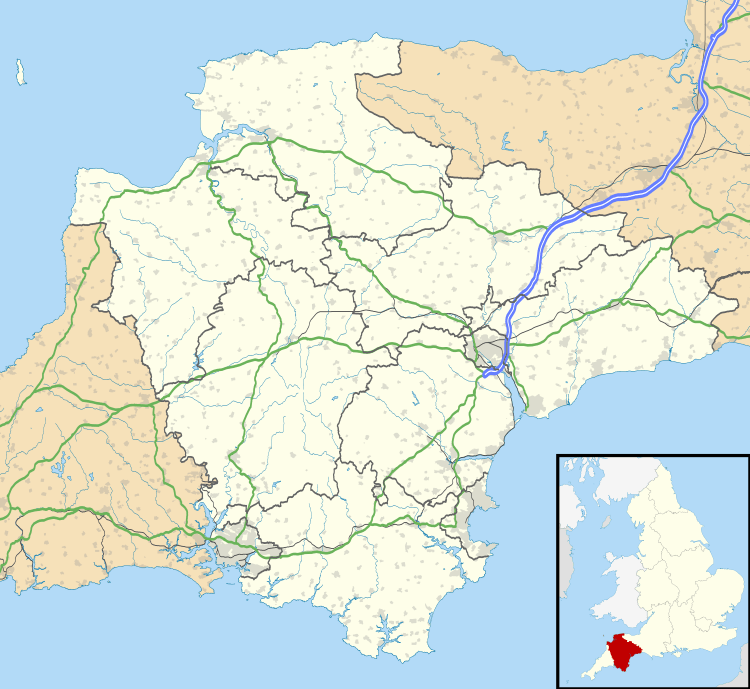St Thomas, Exeter
| St Thomas | |
 Church Road |
|
 St Thomas |
|
| Population | 6,455 (2011) |
|---|---|
| OS grid reference | SX9091 |
| District | Exeter |
| Shire county | Devon |
| Region | South West |
| Country | England |
| Sovereign state | United Kingdom |
| Post town | EXETER |
| Postcode district | EX2, EX4 |
| Dialling code | 01392 |
| Police | Devon and Cornwall |
| Fire | Devon and Somerset |
| Ambulance | South Western |
| EU Parliament | South West England |
| UK Parliament | Exeter |
Coordinates: 50°42′58″N 3°32′24″W / 50.716°N 3.540°W
St Thomas (St Thomas the Apostle's) is a large 3,700-acre (15 km2) civil parish in Devon, England, on the western side of the river Exe, connected to Exeter by Exe Bridge. It has a number of pubs, places of worship, a couple of schools and a large shopping precinct. The population, according to the 2001 census, is 6,246, increasing to 6,455 at the 2011 Census.[1]
St Thomas ward is currently politically represented by County and City Councillor, Rob Hannaford and City Councillor Adrian Fullam.
It originally consisted of two detached parts, the main part of which was by Exeter, to the west of the River Exe. The urban area that built up here but was not originally part of Exeter. The other part, about a mile to the west of the main body of the parish, contained the hamlet of Oldridge and was transferred to the parish of Whitestone in 1884.
St Thomas the Apostle became an urban district in 1894 with the passing of the Local Government Act 1894, and was incorporated into the municipal borough of Exeter in 1900. The name survives for the central area of Exeter west of the river.
A St Thomas Rural District existed from 1894 to 1974.
St Thomas is served by Exeter St Thomas railway station
Parish Church of St Thomas the Apostle
The parish church of St Thomas is larger than any of the parish churches in the city of Exeter proper. The present exterior is Gothic of 1646 with a north aisle of ca. 1810 and a chancel of 1829. An arcade remains from the earlier church of 1412. There are three varieties of Gothic style here, 17th century, Decorated (ca. 1810), and Perpendicular (Victorian).[2] John Betjeman said little about it in his Collins Pocket Guide to English Parish Churches: the South (1968): only "fittings".
References
- ↑ "Ward population 2011.Retrieved 23 Feb 2015".
- ↑ Pevsner, N. (1952) South Devon. Harmondsworth: Penguin Books; pp. 148-53